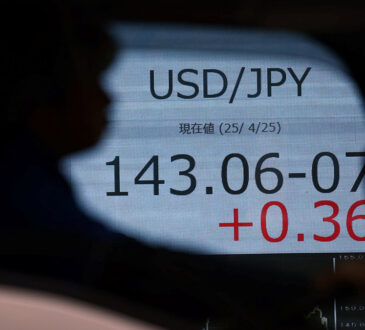US dollar, yen advance as risk-taking eases with more Trump tariffs, Russia talks – ThePrint – ReutersFeed

By Gertrude Chavez-Dreyfuss and Lucy Raitano
NEW YORK/LONDON (Reuters) – Safe-haven currencies led by the U.S. dollar and yen gained on Wednesday, as market jitters escalated amid the latest round of tariff threats from U.S. President Donald Trump and contentious talks to end the Russia-Ukraine war.
The greenback rose against currencies that investors buy when risk appetite is high such as the euro, sterling, the Australian and Canadian dollars and those in emerging markets like the Mexican peso.
The yen, on the other hand, advanced against most major currencies like the dollar, euro, Swiss franc, and sterling.
Those gains were fueled by comments from Trump late on Tuesday that he intends to impose auto tariffs “in the neighborhood of 25%” and similar duties on semiconductors and pharmaceutical imports.
On Friday, Trump said levies on automobiles would come as soon as April 2, the day after members of his cabinet are due to deliver reports to him outlining options for a range of import duties.
“The market is still all about tariff-related conversations. That’s still leading movements in FX currently especially as we approach the hard deadline on Canada and Mexico,” said Eugene Epstein, head of trading and structured products, North America, at Moneycorp in New Jersey.
The tariffs announced for Mexico and Canada have been delayed after negotiations with Trump’s counterparts in each nation.
“What we have seen over the last month and a half is volatility related to ‘will he or won’t he’, ‘will they or won’t they’. What we have now is some clarity.”
In late morning trade, the dollar was down 0.4% against the yen at 151.42, with the euro also dropping 0.6% to 157.87 yen.
The dollar extended losses against the Japanese currency after data showed U.S. single-family homebuilding fell 8.4% in January to a seasonally adjusted annual rate of 993,000 units last month, amid disruptions from snowstorms and freezing temperatures.
The euro, meanwhile, slipped 0.2% versus the dollar to $1.0425.
The dollar index, which essentially is a reverse proxy for the euro because the latter is the largest component of the index, last stood at 107.15, up 0.1%, after dropping 1.2% last week.
The pound got a short-lived boost from a stronger-than-expected UK inflation print. It hit a two-month peak overnight but last traded at $1.2590, down 0.2%.
UK inflation sped up by more than expected to hit a 10-month high of 3.0% in January and is likely to rise further, testing the Bank of England’s confidence price pressures will ease over the longer term.
The Trump administration said on Tuesday it had agreed to hold more talks with Russia on ending the war in Ukraine after an initial meeting that excluded Kyiv, a departure from Washington’s previous approach that rallied U.S. allies to isolate Russian President Vladimir Putin.
Ukrainian President Volodymyr Zelenskiy, however, hit back on Wednesday at Trump’s suggestion Ukraine was responsible for Russia’s 2022 full-scale invasion, saying the U.S. president was trapped in a Russian disinformation bubble.
The euro has reacted most to the headlines on Russia and Ukraine, rallying last week on a potential resolution to the conflict, and slipping on signs of tension.
“Should Russia and Ukraine ultimately reach a peace agreement, the dollar could well come under renewed pressure,” wrote Fawad Razaqzada, market analyst, at City Index and FOREX.com in research note.
“For now, however, there are few clear-cut bearish catalysts for the greenback, allowing it to stage a modest rebound alongside bond yields.”
The euro, earlier, showed little reaction to remarks from European Central Bank board member Isabel Schnabel, who on Wednesday told the Financial Times the central bank was edging closer to pausing rate cuts.
Elsewhere, the Reserve Bank of New Zealand reduced its benchmark rate by 50 basis points to 3.75% as widely expected and signaled future moves would likely be smaller. The latter was enough to boost the New Zealand dollar, which was last up 0.3% at US$0.5721.
(Reporting by Gertrude Chavez-Dreyfuss in New York and Lucy Raitano in London; Editing by Philippa Fletcher and Emelia Sithole-Matarise, Kirsten Donovan)
Disclaimer: This report is auto generated from the Reuters news service. ThePrint holds no responsibility for its content.




